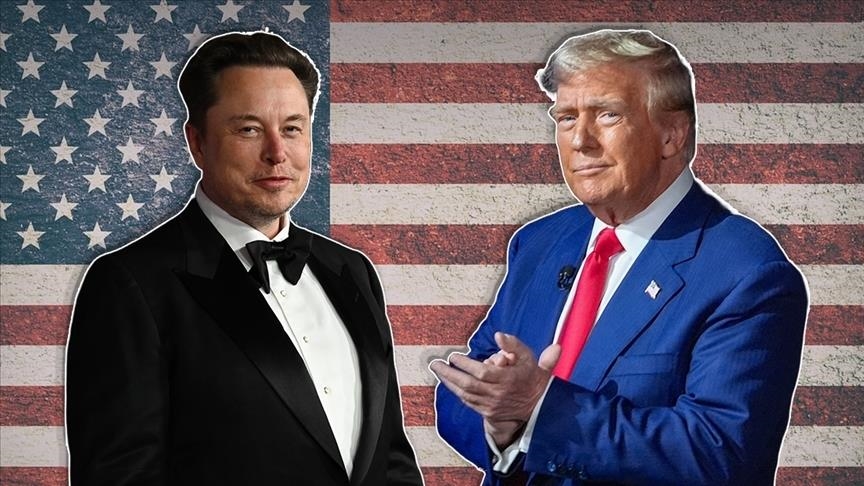Published
9 months agoon

The world of space exploration can be unpredictable and it turned so for two of NASA astronauts Sunita Williams and Butch Wilmore who have been unable to return home due to technical failures with Boeing’s Starliner spacecraft. What started as a routine mission has turned into an extended stay aboard the International Space Station (ISS).
President Trump said Tuesday that he “asked Elon Musk and @SpaceX to ‘go get’ the 2 brave astronauts who have been virtually abandoned in space.”
On the heels, In a post on the social media platform X, SpaceX CEO Elon Musk claimed Tuesday that the Biden Administration left two astronauts “stranded” and said President Donald Trump has asked SpaceX to step in to rescue them.
With President Trump weighing in and Elon Musk promising a rescue, the situation has captured global attention but also resulted in some confusion!
The Stranded Astronauts. A Mission Gone Awry
Sunita Williams and Butch Wilmore were originally sent to the International Space Station (ISS) in June 2024 aboard Boeing’s Starliner spacecraft. The mission was supposed to be short—lasting only about eight to ten days—but unforeseen technical failures changed everything.
The Starliner suffered multiple issues, including thruster failures and helium leaks, leading NASA to deem it unsafe for a return journey. As a result, Williams and Wilmore have been stationed at the ISS for over half a year, far beyond their initial schedule.
However, despite the extended stay, NASA has maintained that the astronauts were never truly “stranded.” They were integrated into ISS operations and became part of the station’s crew. NASA had already made plans to bring them back aboard SpaceX’s Crew-9 mission, which was originally set for February but later pushed to March 2025 due to logistical delays.
Blame It On….
The situation took a turn when former President Trump took to his social media platform, Truth Social, claiming that the Biden administration had “virtually abandoned” the astronauts in space. In a tweet on X, Elon Musk echoed this sentiment, stating that SpaceX would “go get” the astronauts as per Trump’s directive.
The problem? SpaceX was already scheduled to bring Williams and Wilmore back home. NASA had made this decision months ago, and a delay had been publicly announced in December. So, why the sudden uproar?

SpaceX’s. Can It Deliver?
While the political discourse continues, the real question is – can SpaceX safely bring the astronauts back to Earth?
The answer is a resounding yes.
SpaceX has an impressive track record with its Crew Dragon spacecraft, which has successfully ferried multiple astronauts to and from the ISS since 2020. The Crew-9 mission, which will bring Williams and Wilmore home, is part of NASA’s commercial crew program and is a routine operation for SpaceX.
However, delays have been a concern. Crew-9’s return has been pushed to March because NASA wants to ensure that the Crew-10 mission—set to replace the Crew-9 team at the ISS—is fully prepared. Safety is paramount, and NASA has emphasized that there is no rush. Williams and Wilmore are not in any immediate danger; they have food, supplies, and a well-functioning station to operate from.
NASA’s Firm Stance on Safety
Despite Boeing’s insistence that Starliner is safe, NASA officials were unanimous in their decision not to use it for the return journey. Citing past disasters like the Challenger and Columbia tragedies, NASA leadership—including former Administrator Bill Nelson—insisted on prioritizing astronaut safety above all else. This is why the agency opted to rely on SpaceX’s Crew Dragon, a vehicle with a proven safety record.
NASA’s commercial crew program manager, Steve Stich, has also reiterated that Williams and Wilmore were never “stranded.” If an emergency arose, they always had the option to return via Starliner, though NASA deemed that scenario unlikely and undesirable.
The Space Game…
This entire episode also sheds light on the growing gap between Boeing and SpaceX in the commercial space race. Boeing’s Starliner was supposed to be a competitor to SpaceX’s Crew Dragon, but multiple delays, technical failures, and safety concerns have left Boeing playing catch-up. The fact that NASA had to turn to SpaceX for the astronauts’ return further cements SpaceX’s dominance in the industry.
For Musk, this situation is an opportunity to reinforce SpaceX’s reliability and leadership in space travel. For Boeing, it’s another setback in an already troubled program.
What’s Next for Williams and Wilmore?
As it stands, Williams and Wilmore will remain on the ISS until Crew-9’s return mission in late March or early April. In the meantime, they have integrated into ISS operations, conducting experiments and even performing spacewalks. Both astronauts have expressed that while they are eager to return home, they are comfortable with their extended stay.
If anything, their situation aptly indicates the unpredictable nature of space travel. Missions don’t always go as planned, and flexibility is key. While delays are frustrating, NASA’s approach—prioritizing safety and ensuring a smooth transition—reflects the meticulous planning required for human spaceflight.

The Last Bit. Hype vs. Reality


Taiwan’s ‘Historic’ TSMC Deal, A Win Or The End Of Its ‘Silicon Shield’ As China Threatens? A Jittery Taiwan Watches Trump’s Moves On Ukraine, Wondering, Could We Be Next?


America And China’s Thirst For Gold In 2025 Is Draining Other Countries’ Reserves; Here’s Why?


Germany’s Friedrich Merz’s Big Balancing Act—Trump, Borders & Europe’s Future. Can He Deliver?


United Kingdom To Unleash Its ‘Harshest’ Sanctions On Russia Yet—But Will They Bite? How Trouble Is Brewing For Keir Starmer At Home. Shamed For Volunteering British Troops In Ukraine


How It’s Not Trump But Vladimir Putin That Europe Is Stinging From: Trump’s U-Turn On Europe, Russia’s Strong Supply Chain—A Formidable Opponent!


Is Ukraine Now Stuck In The US-Russia Ecosystem? Could Zelensky Have Made A Deal To Stop The War, Is Trump Right?
